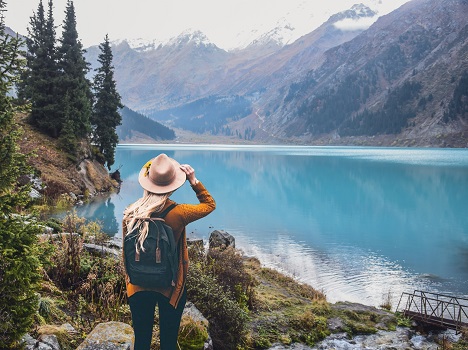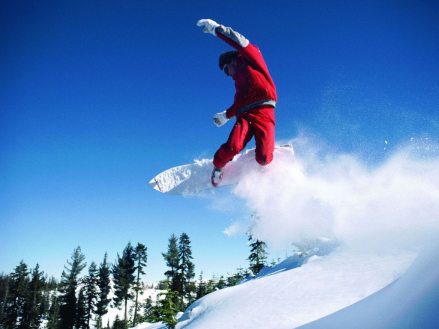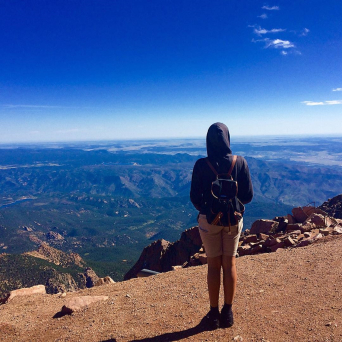- Share
5 species of animals of Kazakhstan, interesting for "trophy" hunters
There are 5 species of animals that are of great interest to hunters especially for those that are seeking to find exotic trophy game. The traditions of hunting are very strong in Kazakhstan, and stretch far back into the earlier times of the country’s history. A true hunter, whether a horseback rider with a bird of prey on his hand or a man with his smart hi-tech weapon that are used for hunting in the mountains on foot – all of the various styles of hunting are recognized as symbols of resilience and true manhood for the people of Kazakhstan. Today hunting in Kazakhstan, is like most other countries in the civilized world, where it is a hobby that promotes conservation and sustainable use of the wildlife.
All trips take place in a designated hunting zone with around the clock area monitoring and rare animals of Kazakhstan protection. Various biotechnological exercises are practiced for example, accounting of animal population and supplementary feeding are compulsory part of hunting arrangements.
There are 59 species of birds and 34 species of mammals in Kazakhstan that fall under hunting quarry. One of the local hunters’ communities near Almaty has come up with a “A Jetisu Group of Seven” nomination that promotes fowling on seven species of birds: quail, turtle-dove, duck, Daurian partridge, pheasant, chukar, and snowcock, where Jetisu is a geographical location in the Central Asia with seven rivers flowing there.
In the central and northern regions of the country, you will find that goose hunting is quite popular not to mention that the national hunting has been restored back to life – with hunting birds and the local breeding of dogs “tazy”.


At first, foreign hunters are usually only interested in trophy hunting for large wild animals: they tend to lean more towards maral (Altai deer), Capra ibex, roe deer; and less towards bear and elk. In Almaty and Eastern Kazakhstan Provinces they have the main territories for hunting on these animals. To be noted that there are more than 15 functioning hunting entities in Kazakhstan. These entities are ready to accept foreign tourists so they can hunt for those trophies that hunters pursue to find.

Trophy hunting usually takes place in remote uninhabited wild areas that are free and far from the distant-pasture of cattle rearing. Despite the difficulties in transporting logistics and sometimes, the uncomfortable conditions of staying in tents and yurts, hunting in the true wild nature with a vast population of animals and birds, really attracts tourists from all over the world, to check out the gaming scene in Kazakhstan. The main factors that have an impact on the price of the hunting experience, depend on the density of wild fowl, size of trophy, living conditions, logistics – which is to say is normally, divided into hunting tours of 8-10 day durations, each.
For example, in the Western Altai (Eastern Kazakhstan) the land is covered with thick dark coniferous taiga, here lies one of the habitats for the marals but, as a trophy they will weigh no more than 10 kilograms, therefore the hunting there is cheaper than in Saur. Saur is a mountain range in Southeastern Kazakhstan. The marals in Saur inhabit the area that is similar to the land of the Central Asian mountains rather than that of Siberian taiga, with that being said, the game in this area may weigh up to 20 kilograms making it well worth the trip to take home a nice size trophy.
It is very difficult to catch marals on foot as this animal is very cautious and shy; that’s why hunting occurs during rut seasons where hunters use whistle to call deer.
Although Saur is a perfect place for maral hunting but it is not meant for hunting bears, roe deers and elks. In the spring of 2016, there was a case in Western Altai, where hunters caught a bear with an impressive skin length: 2,45 meters from tail to nose (!).
Hunting for bear trophies requires strong physical conditioning and training because the larger animals tend to inhabit the higher altitudes and areas in the upper edges of forests – 1,000-1,300 meters above sea level. Hunters move from one point to another looking for bald slopes with light forest – this is where bears usually like to feed in the blueberry areas and in the cedar woodlands.
Western Altai, as a concentration of swales, is also a perfect place for elks. The shovel-shaped racks of these ancient animals are not as large as those of the Kamchatka (a peninsula in the north-eastern part of Eurasia on the territory of Russia), but they are larger than the ones who are living in the European region. Deer hunting happens with dogs, often with huskys, using hunter’s whistle at rut seasons in autumn.
One of the most popular types of hunting in Kazakhstan is the Capra ibex because its population here is one of the largest in the world. The largest Capra ibex may weigh up to 120 kilograms with racks that may reach up to 150 centimeters. The Siberian Capra ibex (or “tau-teke” in Kazakh) is one of the most honored trophies for those who are into mountain hunting. In the Almaty and Turkestan regions, the Capra ibex hunting is lead on horses and it takes several days for a hunter with a guide to travel in the mountains riding a horse. If they notice a quarry, they alight from a horse and get closer on foot.

As for roe deer, they are a complementary trophy for hunters. However, in the case of hunters gathering in groups of 5 to 6 people, for the purpose of bagging several animals for everyone to take a trophy home, then it is better for them to travel to Northern Kazakhstan. This means that it would be best to travel to Northern Kazakhstan, there you will find a larger amount of animals on the plain area with opportunities to find your trophy. These hunting trips are being arranged in the designated hunting zones near Pavlodar, Kostanay, Kokshetau cities.
It is also possible to go on mix hunting excursion for example, “Capra ibex plus maral” or “Capra ibex – maral – roe deer” – each of the hunting trips have, definitely, something interesting and unique to offer in terms of hunting tours.
As we mentioned earlier, for the modern hunter “quarry” is not meant for food. Fedor Karpov, a famous Kazakh ornithologist and hunter, wrote about this bird quite extensively: “What is it that attracts us to this ancient human occupation called hunting? – he asks in one of his essays about nature. – One of the main elements in this activity is, undoubtedly, a breath-taking process of searching and getting the quarry, no matter how hard our companions-in-arms are in shame (casting fearful glances at our “green” community) that may try to push this element back. You can’t argue against instinct, it is a part of our DNA. Another equally important reason for the passion of hunting is the opportunity to totally, (even if it is just for a while) change our familiar surroundings and to walk over the “undressed” land of asphalt and concrete earth, to breath in fresh crisp air, to listen to leaves whisper and birds sing.”
Whatever you may say, hunters spend most of their time in nature and understand it far better than any urban dwellers. Fortunately, Kazakhstan has got many wonderful places where one can indulge in their passion for hunting all the while helping hunters solve many problems and tasks related to conservation, protection and reproduction of the animal world!
Hunting Rules for Foreign Citizens:
Hunting rights for foreign citizens on the territory in the Republic of Kazakhstan arises from the agreement on the hunting arrangements by hunting entity and the obtaining of a permit for using wild animals’ world as well as permission from the state bodies of internal affairs on hunting arms import and export including ammunition.
Arms export and import license should be obtained by a hunting entity that is a party to an agreement concluded on the basis of information provided by a hunter about his hunting gun and its ammunition. Trophy export license should also be obtained by the hunting entity.
Hunting Seasons
| Animal Species | Hunting Season |
| Beaver-rat (or muskrat) | 01 October – 15 February |
| Red squirrel | 20 October – 15 February |
| Raccoon dog, corsac, fox, sable, wolverine, mountain weasel, least weasel, ermine, Siberian striped weasel, steppe polecat, American mink, otter (except Central Asian one), lynx (except that one from Turkistan area), raccoon, hare (tolai hare, brown hare and mountain hare) | 01 November – 15 February (hunting with hunting dogs and hunting birds on corsac, fox and hare in the Northern area** starts from 15 October) |
| Yellow souslik | From the moment of quitting from hibernation until 30 April |
| Groundhog* | From 15 June until hibernation |
| Sandpiper, woodcock | 01 July – 30 November (spring hunting on woodcock’s males is allowed for the period lasting no more than 15 calendar days between 01 March and 30 April) |
| Quail, pigeon, turtle-dove | 20 August – 30 November (hunting with hunting dogs and hunting birds on quail starts from 15 July until the moment of birds’ migration) |
| Diver, goose*, rode goose, duck*, bald-coot | From the 1st Saturday of September until 30 November in the Northern area**, until 15 December in the Southern area*** (spring hunting on drakes is allowed for the period lasting no more than 15 calendar days between 01 March – 15 May) |
| Partridge (white grouse, rock ptarmigan, gray partridge, see-see partridge, Daurian partridge), hazel grouse | From the 1st Saturday of September until 15 November (hunting with hunting dogs and hunting birds starts from 15 August) |
| Black-cock | From the 1st Saturday of September until 30 November in the Northern area**, until 15 December in the Southern area*** (spring hunting on drakes is allowed for the period lasting no more than 15 calendar days between 01 March – 15 May) |
| Brown bear (except that one from the Tien Shan Mountains) | From the 1st Saturday of September until 30 November (spring hunting on bear males and females without offspring is allowed for the period lasting no more than 15 calendar days between 15 April – 15 May) |
| Brock | From the 1st Saturday of September until 31 December |
| Maral, Askanian deer, wild boar, musk deer, elk | From the 1st Saturday of September until 31 December |
| Siberian roe deer | 20 September – 31 December (hunting on males starts from 01 August) |
| Siberian ibex | From the 1st Saturday of September until 31 December (hunting on males starts from 01 August) |
| Great (wood) grouse | 01 October – 30 November (spring hunting on males is allowed for the period lasting no more than 15 calendar days between 01 March – 15 May) |
| Snow cock, chukar | 01 October – 15 December |
| European beaver | 15 October – 31 December |
| Pheasant | 15 October – 31 December (hunting with hunting dogs and hunting birds starts from 01 October) |

Notes:
*except species which are on Kazakhstan Red Book’s List
**Northern area: Akmola Province, Aktobe Province, Atyrau Province, West Kazakhstan Province, Kostanay Province, Pavlodar Province, Northern Kazakhstan, Karaganda Province that includes Osakarovka, Bukhar-Jyrau, Nura, Karkaraly, Abay township; Eastern Kazakhstan that includes Kurchum, Kokpekty, Katon-Karagay, Jarma, Ulan, Abai, Zyryan, Glubokoe, Shemonaikha, Borodulikha, Beskaragai townships as well as areas under administration of Semey and Ridder cities in the Eastern Kazakhstan.
***Southern area: Almaty, Jambyl, Kyzylorda, Mangystau, Turkistan Provinces; Karaganda Province that includes Janaarka, Shet, Aktogay, Ulytau townships; Eastern Kazakhstan that includes Ayaguz, Tarbagatay, Zaisan, Urjar townships.
















